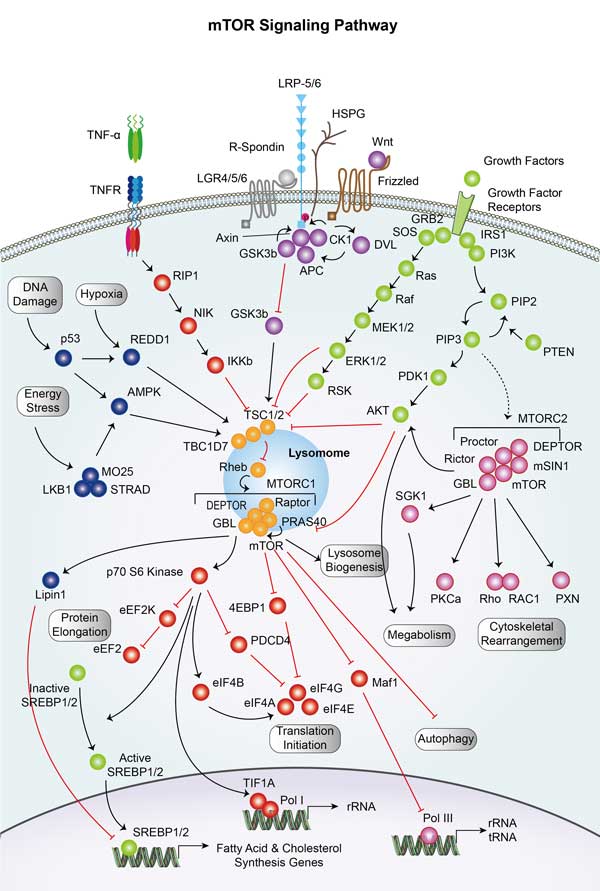RSPO3
- Product List
- Overview
- Review / Q&A
-
Official Full Name
R-spondin 3 -
Synonyms
RSPO3;R-spondin 3;R spondin 3 homolog (Xenopus laevis) , thrombospondin, type I, domain containing 2 , THSD2;R-spondin-3;FLJ14440;R-spondin 3 homolog;roof plate-specific spondin-3;protein with TSP type-1 repeat;thrombospondin, type I, domain cont
Recombinant Proteins
- Human
- Mouse
- Zebrafish
- E.coli
- HEK293
- CHO
- Mammalian Cells
- Human Cells
- GST
- His
- Non
- Fc
- T7
Background
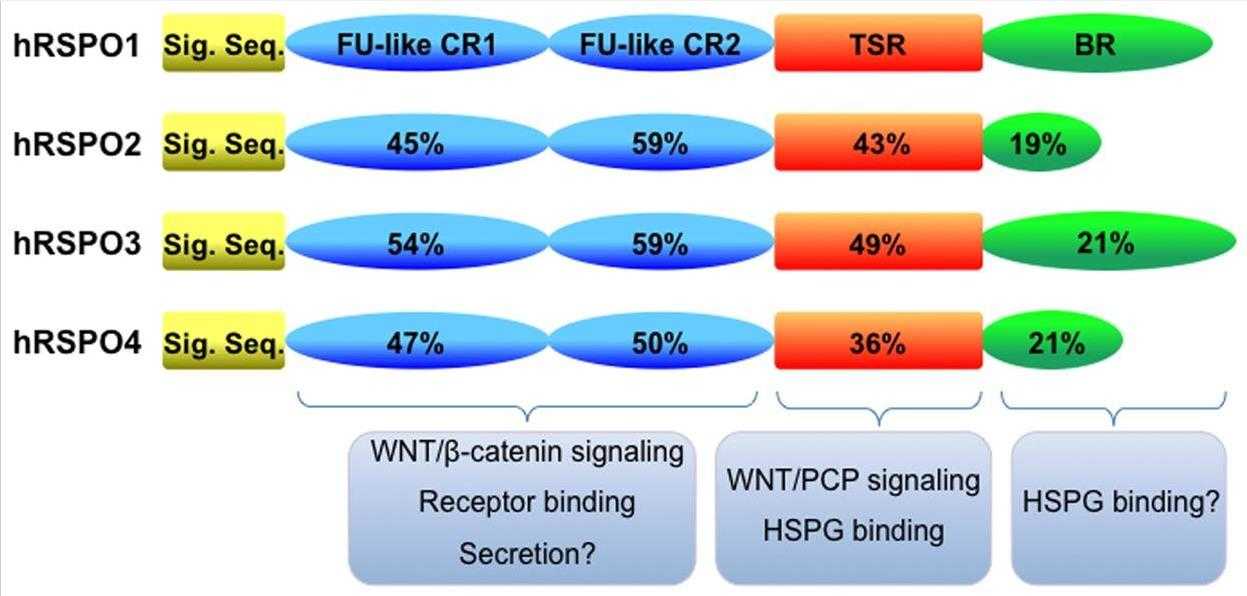
Fig1. The human RSPO family of proteins. (Yong-Ri Jin, 2012)
What is RSPO3 protein?
RSPO3 gene (R-spondin 3) is a protein coding gene which situated on the long arm of chromosome 6 at locus 6q22. This gene belongs to the R-spondin family. The encoded protein plays a role in the regulation of Wnt (wingless-type MMTV integration site family)/beta-catenin and Wnt/planar cell polarity (PCP) signaling pathways, which are involved in development, cell growth and disease pathogenesis. Genome-wide association studies suggest a correlation of this gene with bone mineral density and risk of fracture. This gene may be involved in tumor development. The RSPO3 protein is consisted of 272 amino acids and RSPO3 molecular weight is approximately 30.9 kDa.
What is the function of RSPO3 protein?
RSPO3 is a protein that plays a role in modulating body fat distribution and regulating adipose cell biology. It is involved in the Wnt/β-catenin signaling pathway, which is crucial for processes such as proliferation, stem cell control, and tissue homeostasis. RSPO3 can have depot-specific effects on adipose progenitor cells and adipocytes, influencing their biology in vitro. It also interacts with the ZNRF3/RNF43-LGR4/5/6 module to control Wnt signaling, impacting stem cell regulation throughout the body.
RSPO3 related signaling pathway
The RSPO3-related signaling pathway is a critical component of the Wnt/β-catenin signaling cascade, which regulates various cellular processes such as proliferation, differentiation, and migration. RSPO3 (Ret Finger Protein-Like 3) acts as a ligand for the Leucine-rich repeat-containing G-protein coupled receptors (LGR) 4, 5, and 6, enhancing the interaction between these receptors and Frizzled proteins in the presence of Wnt ligands. This interaction stabilizes β-catenin, preventing its degradation by the destruction complex and allowing it to accumulate in the cytoplasm. Accumulated β-catenin translocates to the nucleus, where it interacts with T-cell factor/lymphoid enhancer factor (TCF/LEF) transcription factors to activate target gene expression. Dysregulation of this pathway, often due to mutations or aberrant expression of RSPO3, can lead to uncontrolled cell growth and is implicated in the development of numerous diseases, including cancers, cardiovascular anomalies, and developmental disorders. Therefore, understanding the RSPO3-mediated signaling pathway is essential for developing targeted therapies against these conditions.
RSPO3 related diseases
RSPO3, also known as Ret Finger Protein-Like 3, is a protein that plays a crucial role in various biological processes. Mutations or abnormal expression of RSPO3 have been linked to several diseases, including cancer (such as colorectal cancer and breast cancer), cardiovascular diseases, neurodegenerative disorders (like Alzheimer's disease), and developmental conditions (e.g., congenital heart defects). These associations underscore the importance of RSPO3 in maintaining cellular functions and highlight its potential as a therapeutic target for treating related diseases.
Bioapplications of RSPO3
RSPO3 (Ret Finger Protein-Like 3) has a range of bioapplications, particularly in the field of regenerative medicine and tissue engineering. Its role in regulating Wnt/β-catenin signaling makes it a potential target for modulating cell proliferation, differentiation, and migration, which are key processes in tissue regeneration and repair. RSPO3 is being explored for its ability to promote angiogenesis, enhance stem cell self-renewal, and induce the differentiation of various cell types, including osteoblasts for bone regeneration and cardiomyocytes for heart repair. Additionally, due to its involvement in cancer pathways, RSPO3 is also under investigation as a biomarker for early detection and a therapeutic target for cancer treatment. The precise manipulation of RSPO3 expression or activity holds promise for advancing personalized medicine approaches and improving outcomes in regenerative therapies.
Case Study
Case Study 1: Hui Zhang, 2024
RSPO3, produced by endothelial cells (ECs), protects the endothelium, but its mechanisms are unclear. Researchers investigated RSPO3's role in pulmonary endothelial repair following sepsis-induced injury using mice models and cells from septic patients. Here low RSPO3 levels in patients correlate with endothelial damage and oxygenation indices. RSPO3 knockdown in ECs worsens injury, while overexpression aids recovery. RSPO3 promotes endothelial regeneration via the LGR4 receptor and activates β-catenin and integrin-linked kinase (ILK) pathways, highlighting its potential in vascular injury repair.
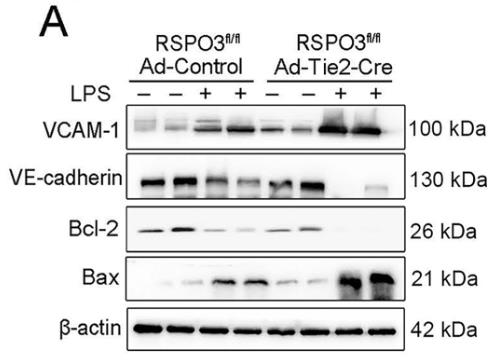
Fig1. Western blot showing pulmonary VCAM-1, VE-cadherin, Bcl-2 and Bax levels in RSPO3fl/fl mice.

Fig2. Endothelial permeability was determined by 10-kDa FITC–dextran flux assay.
Case Study 2: Nellie Y. Loh, 2020
Fat distribution is a cardiometabolic risk factor, but its mechanisms are not well understood. This study shows that RSPO3, linked to waist-to-hip ratio and body mass index, affects subcutaneous adipocyte expression. It may restrict lower-body fat, enlarge gluteal fat cells, and cause insulin resistance by inhibiting adipogenesis and increasing apoptosis. RSPO3 could also promote upper-body fat by boosting abdominal adipose progenitor proliferation. Its effects on abdominal and gluteal progenitors in vitro suggest WNT signaling changes. Zebrafish with a rspo3 mutation have altered fat distribution, indicating RSPO3's role in fat storage capacity.
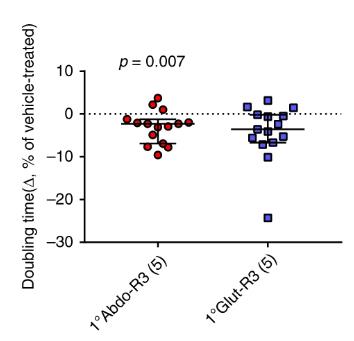
Fig3. Effects of rhRSPO3 treatment on AP proliferation.
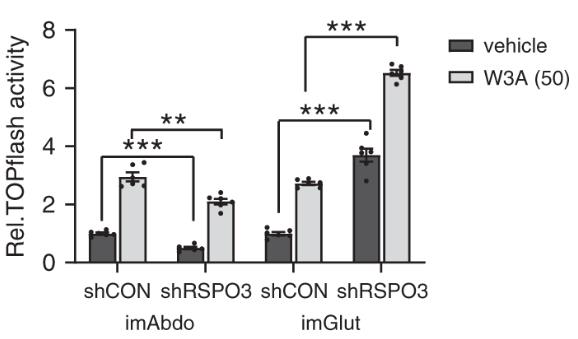
Fig4. RSPO3-KD in imAbdo versus imGlut cells has differential effects on TOPflash promoter activity.
Quality Guarantee
High Purity
.jpg)
Fig1. SDS-PAGE (RSPO3-2866H)
.
.jpg)
Fig2. SDS-PAGE (RSPO3-1946H)
Involved Pathway
RSPO3 involved in several pathways and played different roles in them. We selected most pathways RSPO3 participated on our site, such as Regulation of FZD by ubiquitination,Signal Transduction,Signaling by Wnt, which may be useful for your reference. Also, other proteins which involved in the same pathway with RSPO3 were listed below. Creative BioMart supplied nearly all the proteins listed, you can search them on our site.
| Pathway Name | Pathway Related Protein |
|---|---|
| Signaling by Wnt | LGR4,WLS,RSPO4,SOX32,CBY1,KLHL12,SOX7,HECW1,HECW1B,LGR6 |
| Signal Transduction | FGD2,RGS7,C,SOX4B,ANXA1A,PNOC,UTS2D,VIP,FMNL1,ARHGAP44 |
| Regulation of FZD by ubiquitination | RNF43,RSPO1,RSPO4,LGR6,LGR4,LGR5,ZNRF3,RSPO2,FMNL3 |
| TCF dependent signaling in response to WNT | LGR5,RSPO4,LEO1,TLE3B,SOX9A,PYGO1,HECW1B,BCL9L,TNKS2,SOX9B |
Protein Function
RSPO3 has several biochemical functions, for example, G-protein coupled receptor binding,frizzled binding,heparin binding. Some of the functions are cooperated with other proteins, some of the functions could acted by RSPO3 itself. We selected most functions RSPO3 had, and list some proteins which have the same functions with RSPO3. You can find most of the proteins on our site.
| Function | Related Protein |
|---|---|
| heparin binding | UBE4A,WISP2,FGF1A,CYR61L1,LPL,CYR61,VEGFA,PCOLCE2,SELP,FGFRL1 |
| frizzled binding | RNF43,WNT11R,WNT7AA,BAMBI,WNT2B,CTHRC1,WNT7A,LRP6,WNT7B,WNT9A |
| G-protein coupled receptor binding | GNAT3,PACRG,ARHGEF12,GNA14,PICK1,HSPA1A,PYY,RSPO4,PPY,GHRL |
| receptor binding | SERPINE2,CADM1A,POU2F1,AMH,NRG1,PLG,ABL1,FASLG,TNFSF4,CNTFR |
Interacting Protein
RSPO3 has direct interactions with proteins and molecules. Those interactions were detected by several methods such as yeast two hybrid, co-IP, pull-down and so on. We selected proteins and molecules interacted with RSPO3 here. Most of them are supplied by our site. Hope this information will be useful for your research of RSPO3.
lgr4;EEA1
RSPO3 Related Signal Pathway
Resources
Related Services
Related Products
References

